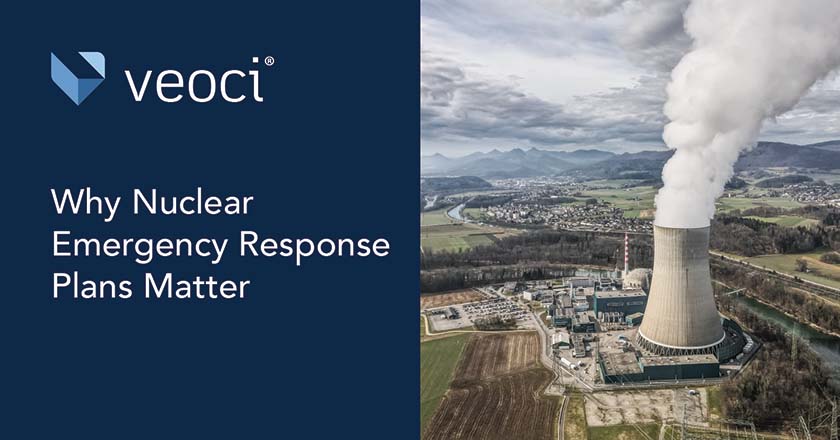What would you do if you found yourself face-to-face with a nuclear disaster?
Your first instinct might be to evacuate. And for most, that plan is the right response. In history’s few radiological events, however, there’s a group of people who have to do more than just evacuate.
While nuclear energy isn’t the largest method of energy production, it’s slowly expanding. More and more emergency managers across the globe will need to have an EOP for nuclear events as more plants are built and nuclear power captures more of the market in the coming decades.
While some in the field have already spent many hours developing a nuclear emergency response plan, it’ll be new ground for many. Let’s explore this facet of emergency management and how emergency managers will wrap it into their EOCs.
Nuclear Power in the U.S.
Nuclear disasters are once-in-a-generation events, but what’s at risk when something goes wrong is why we plan. As of 2021, about 3 million people in the U.S. live within 10 miles of a nuclear power plant. That 3 million is only about .9% of the U.S. population and a disarming number. But the goal of emergency management is to mitigate losses on all fronts, and we can’t let a seemingly small statistic change that mode of operation.
The U.S., as of 2021, has 93 reactors within 55 plants. 28 states hold those reactors, with most of the reactors sitting east of the Mississippi River. The U.S. Energy Information Administration (EIA) does project a general reduction in nuclear electric energy in the coming decades, but new plants and reactors are still springing up. The Tennessee Valley Authority pushed its Watts Bar Unit 2 online in 2016, and 2 new reactors built by the Southern Company are expected to be completed by 2023.
Forecasts by the EIA and similar bodies may be disarming, but these reports don’t mean investing in nuclear preparedness is a bad investment. As long as nuclear power plants exist, municipal emergency managers will need to maintain their communities’ preparedness for radiological events.
Considerations for Nuclear Response and Preparedness
Nuclear disasters stand out from other emergencies. The danger of a radiological event is largely invisible to people, and residents will heavily rely on the guidance of officials if something were to happen.
Radiological events pose unique health challenges other disasters simply cannot create. If a nuclear event escalates enough, people and other life can be exposed to dangerous levels of atomic radiation. Fallout also makes areas uninhabitable for extended periods. Severe events, like the Chernobyl disaster, can push people out of an area for decades; while a small portion of residents have returned to the exclusion zone and surrounding areas, health officials have strongly advised against doing so.
These health risks force emergency managers to ensure their communities’ institutions are also prepared for an unlikely disaster. Health officials and workers will have to take special measures to protect themselves and other patients. Coordination is a must, and setting these pathways up in the scramble following a radiological event almost ensures suboptimal outcomes.
Time is also a limited resource in these scenarios and emergency managers will need to quickly start an all-hands-on-deck response within their communities. This entails wrapping in and coordinating with local figures, law enforcement, and federal authorities. While no plan can perfectly respond to an emergency, a playbook will facilitate these larger efforts and save precious minutes.
Emergency managers know the difference an EOP makes in any emergency. The very low frequency of nuclear events shouldn’t dissuade EMs near reactors from putting the time and energy into creating a nuclear response EOP.
The Future and Nuclear Response
The world is exploring how to fight climate change, and nuclear power is one of the many viable items in that conversation. While the U.S. has stalled its nuclear energy growth in recent years, more of the world is embracing its capabilities. As the next few decades roll by, more and more people will be living within nuclear EPZs, and officials will have to build preparedness for those communities.
The shift in energy production makes sense. Nuclear power is not only one of our most reliable energy sources, it’s also one of the safest. But because emergencies and nuclear disasters are a slim possibility, someone has to prepare a response that mitigates potential losses.
And while the majority of emergency managers don’t plan for this type of event, they can participate in the conversation and keep the knowledge moving within their circles. A new generation of emergency managers will eventually fill their positions, and those new practitioners may have more use for the knowledge than their predecessors did. Emergency management is founded in handling the unexpected, and all forms of preparedness help them get there.








